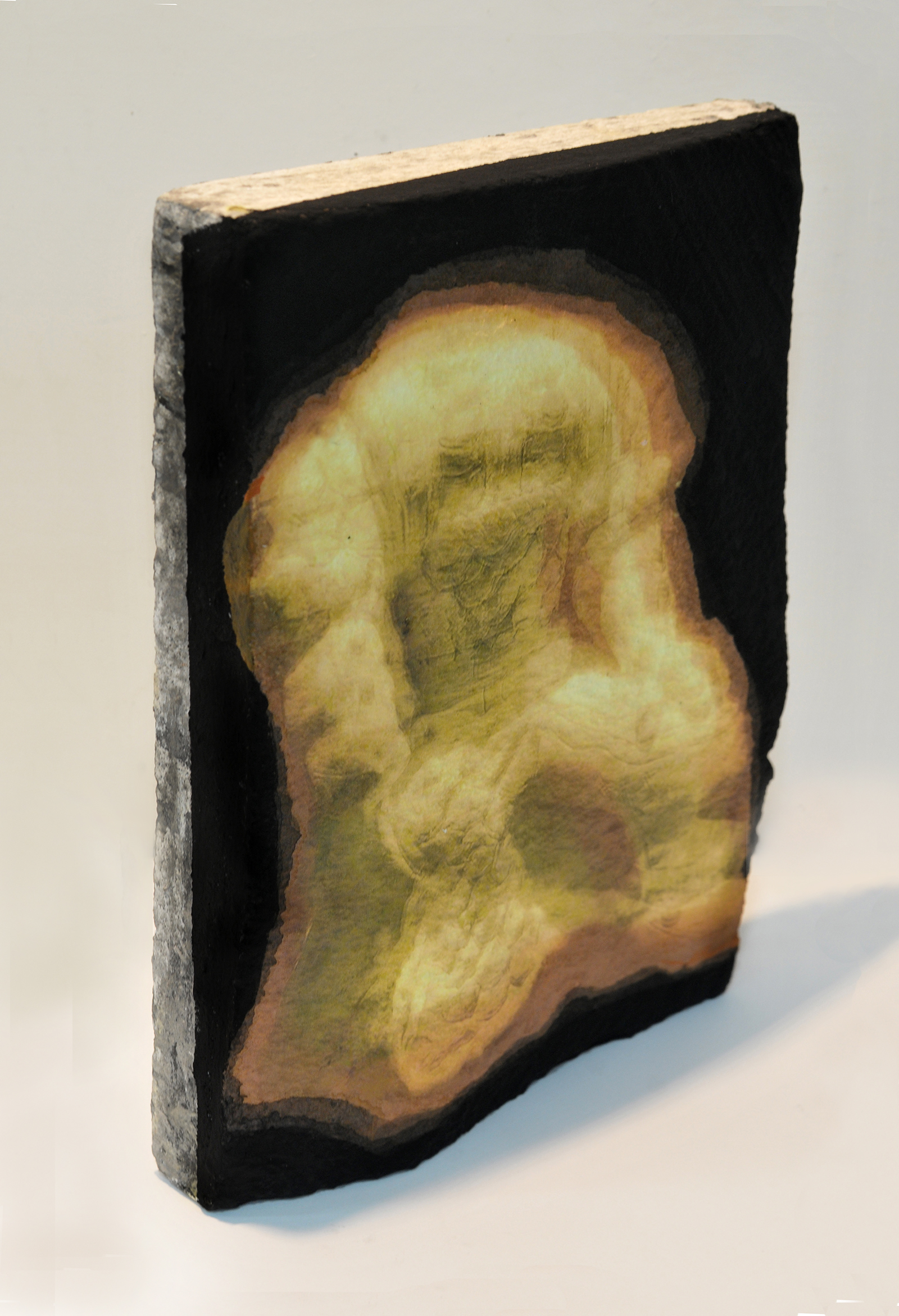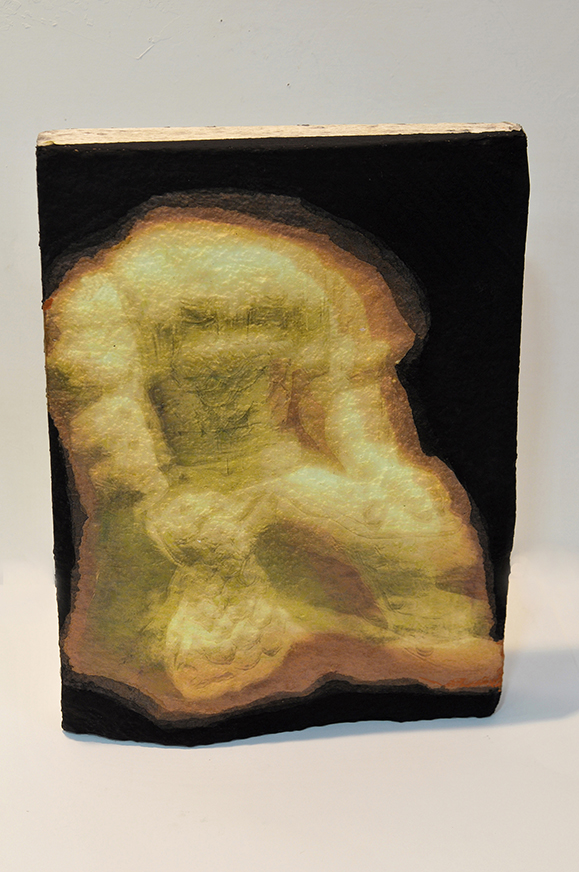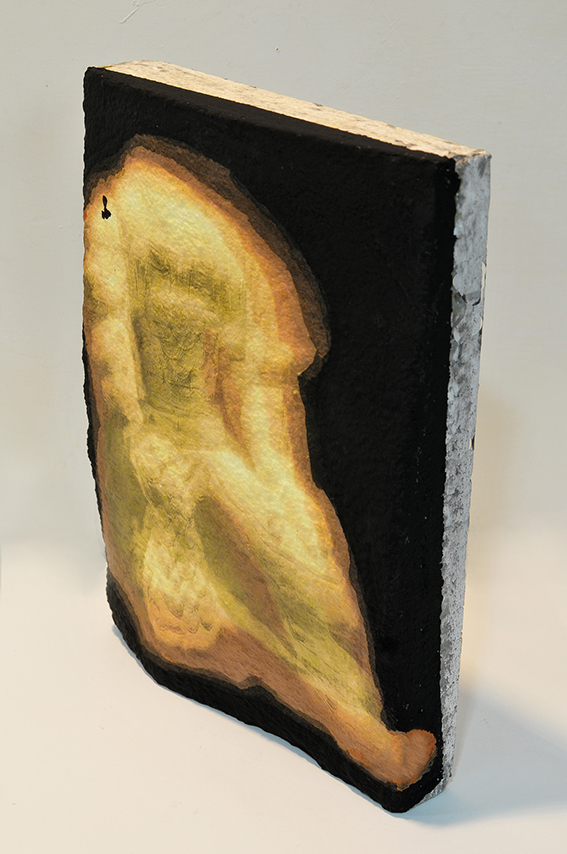Lee Jungyeol
Book, 2025
Mixed media, Acrylic paint, Printmaking inks, Hanji (Korean paper)
33 x 42 x 7 cm
Edition: 1 of 100
Certificate of authenticity included
US$1,000
Show your appreciation with a like
Purchasing opens early August 2025. Be the first to know!
Want a reminder? Join our mailing list.
About the work
- Materials
- Mixed media, Acrylic paint, Printmaking inks, Hanji (Korean paper)
- Dimensions
- 33 x 42 x 7 cm
- Frame
- Frame not included
- Signature
- On the lower-left corner of the back
- Certificate Of Authenticity
- Certificate included
The "Book" explores the structures of authority and monuments, exposing the hypocrisy embedded in the fixed concept of knowledge. By appropriating the image of a general’s statue, the work replaces historical, political, and commemorative symbols with a fake monument. Through this metaphorical act, it questions the false sanctity of books as repositories of memory. The embedded material, Styrofoam, is inherently lightweight and ephemeral. However, by layering printed images on Hanji (traditional Korean paper), the work creates a three-dimensional illusion reminiscent of permanent materials like marble, cement, or granite. The juxtaposition of digitally printed images with traditional Hanji highlights the tension between the everyday nature of modern media and the gravitas of historical artifacts. The materiality of Styrofoam is purposefully revealed, and the edges and back of the piece mimic the textures of stone to simulate the hollow facade of authority. By using soft materials to imitate hard surfaces, the work critically reflects on the illusions of permanence and the values and narratives that we often take for granted.
About the artist
A long-standing collaborator in the evolving currents of modern art, Lee Jungyeol has devoted nearly four decades to joint explorations of memory, time, and the residual poetry of everyday objects. Beginning his artistic journey in his early twenties, Lee has forged a practice that privileges dialogue, shared vision, and the collective reimagining of the overlooked. Drawing on nearly six decades of life experience, he stands as a testament to the power of sustained inquiry and the quiet revolution of found materials. Central to Lee’s oeuvre is an almost archaeological fascination with the “abandoned” and “unmemorialised”—fragments that bear the imprint of functionality yet have slipped beyond our conscious regard. His acclaimed work Cement Monitor exemplifies this ethos. By returning actual coffee cups to the very marks left by their predecessors, Lee stages a poignant act of restitution: not simply resurrecting a lost form, but evoking the unconscious yearnings, authorities, and desires that once animated these vessels. In his own words, “It is not a Starbucks, but a self-portrait and interpretation of a modern person who wants to look like a Starbucks,” underscoring how personal identity, corporate symbolism, and collective memory coalesce in the residue of daily ritual. Collectors and fellow artists alike are drawn to Lee Jungyeol’s work for its subtle alchemy—transforming industrial detritus into carriers of contemporary longing. His practice remains rooted in collaboration and experimentation, inviting us to reconsider what we discard, what we memorialise, and the hidden narratives encoded in the traces of time.



